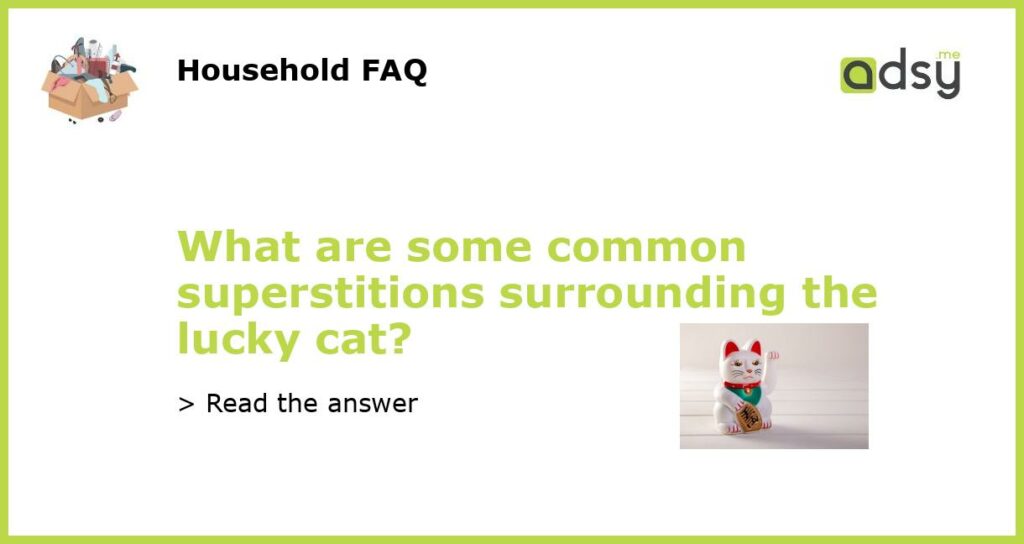Understanding the Lucky Cat: Superstitions and Beliefs
When it comes to symbols of good luck, the Maneki-Neko or the Lucky Cat takes the top spot. This Japanese cat figurine portrays a cat beckoning with an upright paw and is believed to bring good luck and prosperity to its owner. But as with most symbols of good fortune, many superstitions and beliefs surround the Lucky Cat.
The Color of the Lucky Cat Has Different Meanings
The Lucky Cat comes in various colors, and each hue carries a different meaning based on prevalent superstitions. A white Lucky Cat represents purity and positive energy, while a black one signifies protection and wards off evil spirits. A red Lucky Cat is believed to invite luck and happiness in both business and love life.
Placement at Home or Work Can Influence Its Effectiveness
Where you place your Lucky Cat in your home or workplace can determine its ability to bring good luck or not. A common belief dictates that if you place it in the east-facing home’s front door, it will bring new opportunities in life. Whereas, in business, the Lucky Cat must face the store’s entrance to invite good luck in the form of prosperous sales.
The Cat’s Paw Movement Has Significance
The Lucky Cat’s paw movement also has a unique significance. A cat with a raised paw invites wealth and prosperity, while a waving paw beckons both good customers and new opportunities. A Lucky Cat with both paws up attracts the double financial fortune, whereas a cat with the left paw raised invites in a stream of customers.
The Label on the Collar Has Relevance
Many Lucky Cats sport a collar necklace with a bell and a label. The collar signifies that the cat belongs to someone but has profound relevance in superstitions. The label often has Japanese characters that stand for luck, wealth, or prosperity, reinforcing the figurine’s good luck properties. However, the label can also signify the owner’s ability to attract luck, making it an essential item for those who believe in harnessing positive energy.






